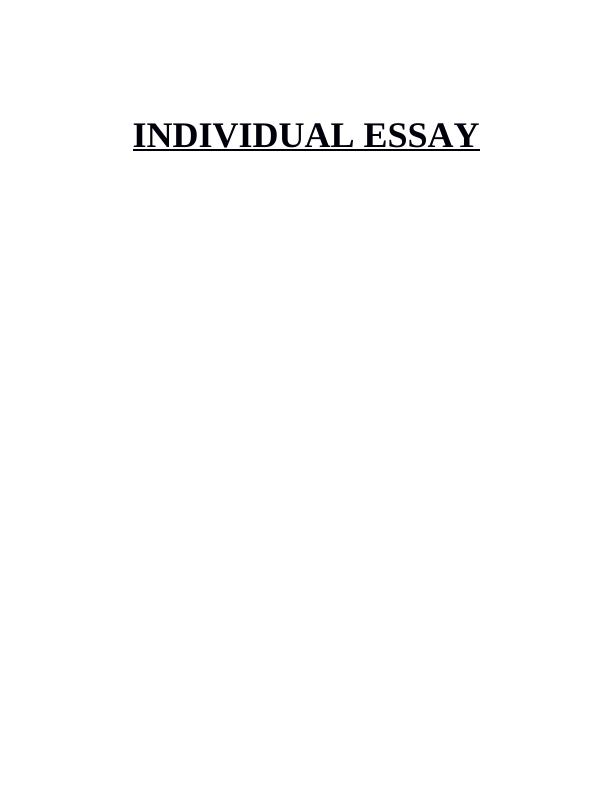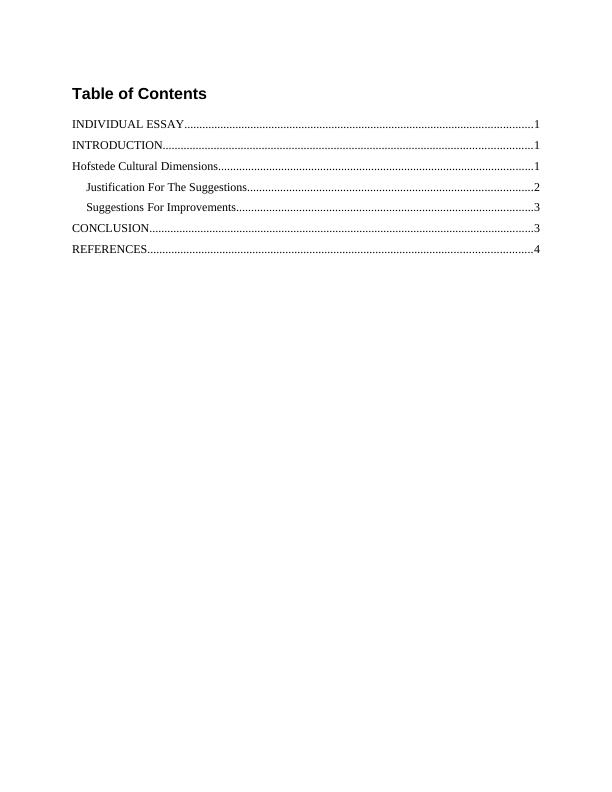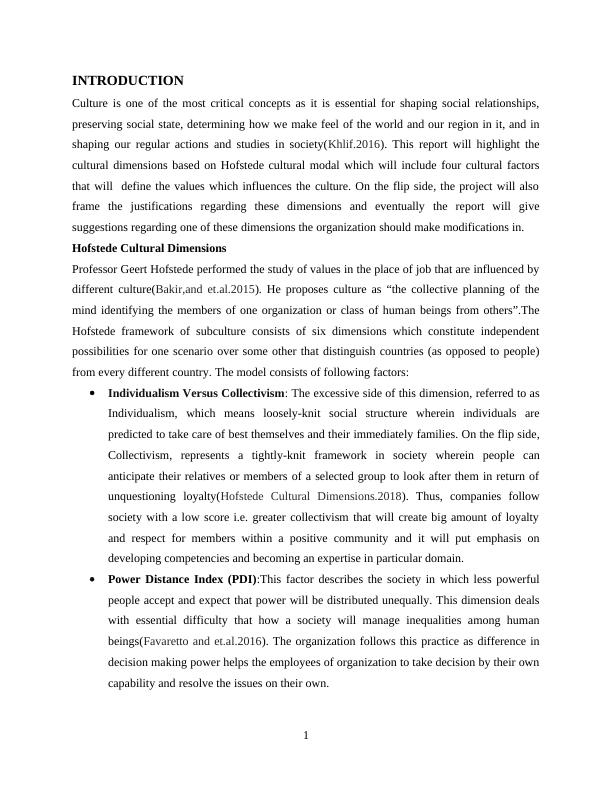Hofstede's Cultural Dimensions Theory
7 Pages1295 Words166 Views
Added on 2020-10-22
Hofstede's Cultural Dimensions Theory
Added on 2020-10-22
ShareRelated Documents
INDIVIDUAL ESSAY

Table of ContentsINDIVIDUAL ESSAY....................................................................................................................1INTRODUCTION...........................................................................................................................1Hofstede Cultural Dimensions.........................................................................................................1Justification For The Suggestions...............................................................................................2Suggestions For Improvements...................................................................................................3CONCLUSION................................................................................................................................3REFERENCES................................................................................................................................4

INTRODUCTIONCulture is one of the most critical concepts as it is essential for shaping social relationships,preserving social state, determining how we make feel of the world and our region in it, and inshaping our regular actions and studies in society(Khlif.2016). This report will highlight thecultural dimensions based on Hofstede cultural modal which will include four cultural factorsthat will define the values which influences the culture. On the flip side, the project will alsoframe the justifications regarding these dimensions and eventually the report will givesuggestions regarding one of these dimensions the organization should make modifications in.Hofstede Cultural DimensionsProfessor Geert Hofstede performed the study of values in the place of job that are influenced bydifferent culture(Bakir,and et.al.2015). He proposes culture as “the collective planning of themind identifying the members of one organization or class of human beings from others”.TheHofstede framework of subculture consists of six dimensions which constitute independentpossibilities for one scenario over some other that distinguish countries (as opposed to people)from every different country. The model consists of following factors:Individualism Versus Collectivism: The excessive side of this dimension, referred to asIndividualism, which means loosely-knit social structure wherein individuals arepredicted to take care of best themselves and their immediately families. On the flip side,Collectivism, represents a tightly-knit framework in society wherein people cananticipate their relatives or members of a selected group to look after them in return ofunquestioning loyalty(Hofstede Cultural Dimensions.2018). Thus, companies followsociety with a low score i.e. greater collectivism that will create big amount of loyaltyand respect for members within a positive community and it will put emphasis ondeveloping competencies and becoming an expertise in particular domain.Power Distance Index (PDI):This factor describes the society in which less powerfulpeople accept and expect that power will be distributed unequally. This dimension dealswith essential difficulty that how a society will manage inequalities among humanbeings(Favaretto and et.al.2016). The organization follows this practice as difference indecision making power helps the employees of organization to take decision by their owncapability and resolve the issues on their own.1

End of preview
Want to access all the pages? Upload your documents or become a member.
Related Documents
Management in Global Business Environmentlg...
|5
|985
|227
Study Skills for Higher Education: Assignmentlg...
|6
|1467
|107
Marketing across Cultureslg...
|7
|2069
|30
Study Skills for Higher Education- Doclg...
|6
|1309
|239
Study Skills for Higher Education - Assignmentlg...
|6
|1407
|383
Hofstede's Cultural Dimension Framework: A Critical Evaluationlg...
|7
|1316
|33
